The Way of the World. Finding Beauty in the Midst of Pain
When the floodwaters rose in Texas last week, I was half a world away—in Paris.
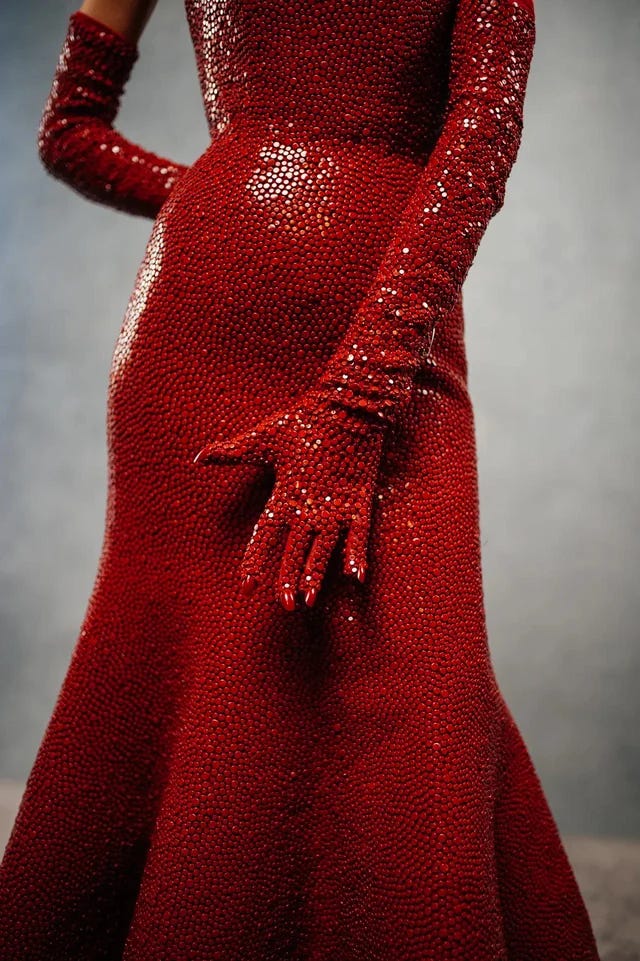

As I read reports of missing children, displaced families, and devastated communities, I was trying to write about it—pastorally, theologically, prayerfully. At the very same time, my wife was being fitted for her outfit ahead of the opening show of Schiaparelli’s 2025/26 Haute Couture collection.
The contrast was almost too much to hold. One part of my heart was in a grieving state back home. The other was watching final adjustments being made to expensive, gorgeously tailored jackets under the watchful eye of one of the fashion world’s most celebrated designers—who also happens to be my son.
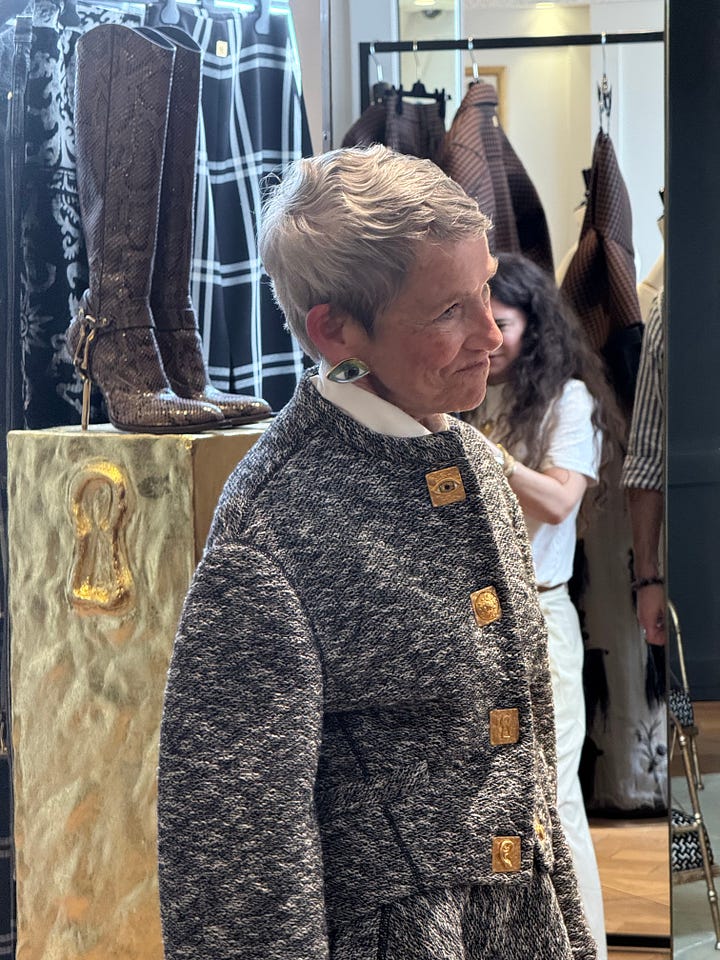

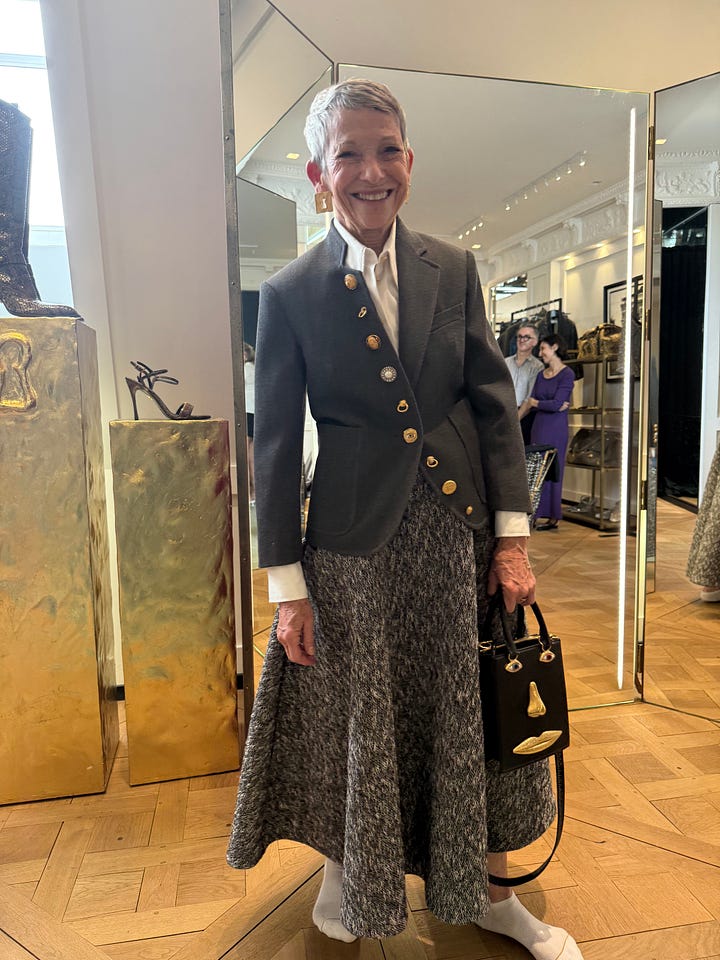
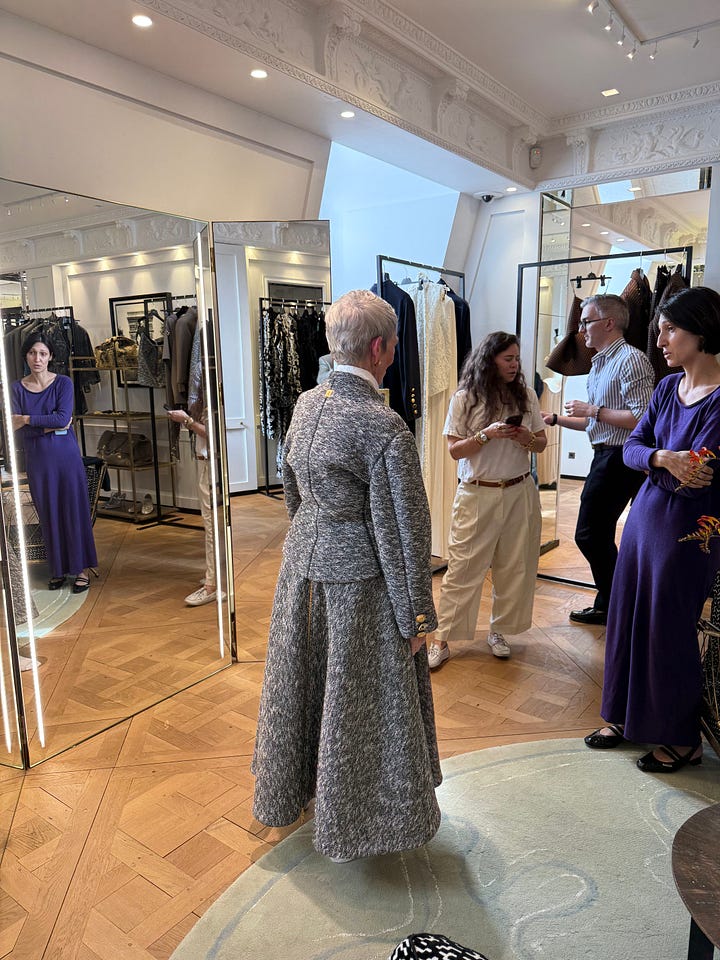
The dissonance was striking, at first. Beauty, celebration, applause… they seemed out of place in a week like this. But if you follow that line of guilt too far, you end up in a world where you’re not allowed to sing because others are mourning, or laugh because others are weeping.
And eventually, you forget how to live altogether.
It reminded me of something our favorite Anglican writer once said. C.S. Lewis faced a similar cultural tension in 1939, at the outbreak of World War II. Preaching to students at Oxford, many of whom wondered whether it was even moral to be pursuing education while the world was collapsing, Lewis responded with clarity and grace.
“The war creates no absolutely new situation,” he said. “It simply aggravates the permanent human situation so that we can no longer ignore it.”
Students feared that studying literature or science in wartime might seem frivolous. But Lewis argued that all of life has always been lived “on the edge of a precipice.” If we waited for perfect peace to pursue beauty or truth, we’d never begin.
“If men had postponed the search for knowledge and beauty until they were secure,” he wrote, “the search would never have begun.”
The question, then, is not whether to love beauty in a broken world, but how.
That’s what I was thinking as I watched my son, Daniel, unveil his newest collection for Schiaparelli.
The collection was a smash hit. It was beautiful in ways I had never seen before.
It is clear to me that Daniel is both a consummate artist and a fashion academic. He provides show notes for all the viewers that explain what he is doing and why.
He speaks about Elsa Schiaparelli and the foundation she developed in pre-war France, and the friendly competition she had with Coco Chanel.
Daniel explained in his show notes:
Chanel was interested in how clothes could be of practical use to women; Elsa was interested in what fashion could be. Was a dress still just a dress, or could it be considered a piece of art? How could fashion speak to art? How could art inform and speak to fashion?
The entire show featured women’s clothing stripped down to their most basic colors: black and silver/white. And in the center of the runway lineup were a few models wearing bright red gowns, almost blood red. One of the gowns featured a beating heart made of rhinestones. Exquisite.
In the evening, we regathered at the same Petite Palais for a cocktail party, a meet-and-greet with Daniel, and a huge crowd of 300 all mingling in and around the mannequins modeling the looks.
1. He Makes Women Feel Beautiful
I spent thirty minutes speaking with two of the top models in the world, both in their early twenties. They’d been discovered as teens and have walked for all the major houses. Yet without hesitation, both told me: “Daniel is our favorite.” Why? “Because he gets us. And because the clothes are beautiful.” Then one of them added what every father longs to hear: “He’s so kind. And humble.” The other nodded. “All the girls feel that way.”

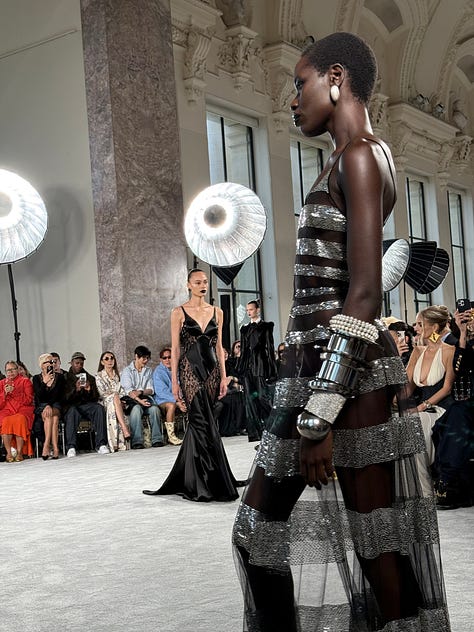
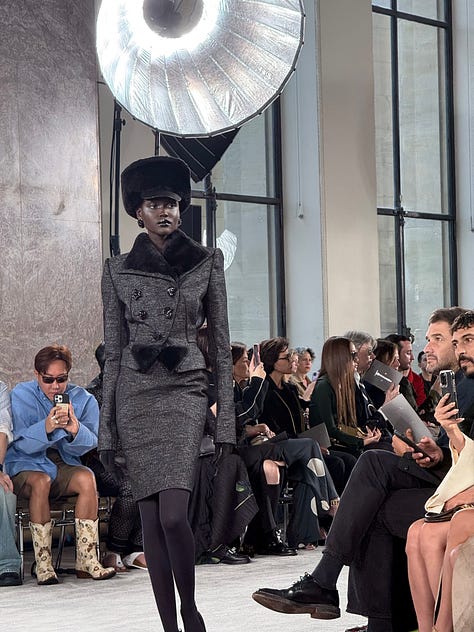
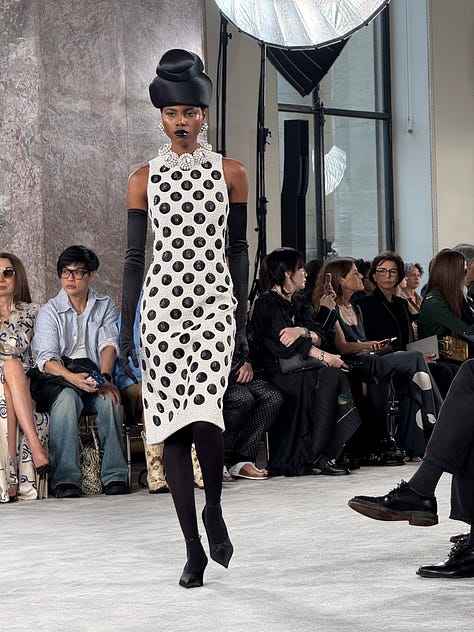
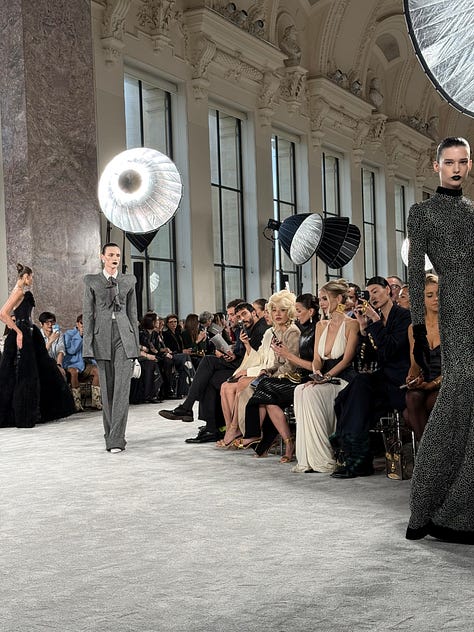
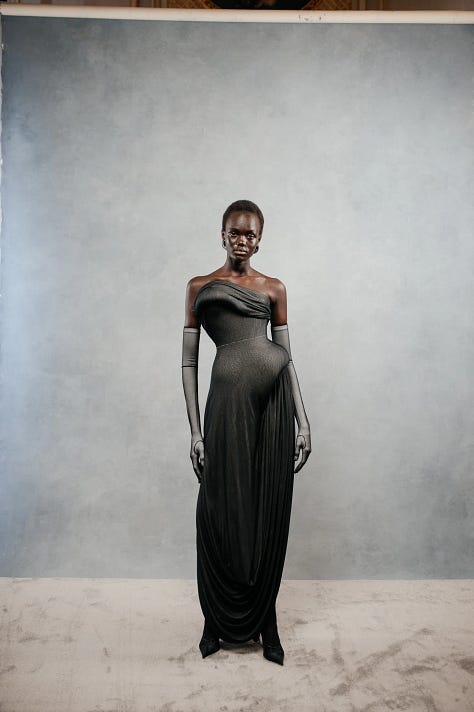
Let that sink in. In an industry infamous for ego and excess, they weren’t just talking about style. They were talking about character. There’s something powerful about a designer who doesn’t just dress a woman but honors her. Daniel has found a way to let women be radiant and real. Elsa would be proud, for sure. But Fran and I were beaming.
2. Starpower and the Scene
The starpower was undeniable. Paparazzi buzzed. Celebrities swept in. And I realized how far I’ve drifted from pop culture when I had to ask someone next to me, “Who is that?”
“Dua Lipa,” they whispered.
“Oh,” I nodded. No clue.
Then came Cardi B, accompanied by an electric hum of flashbulbs. It’s a strange feeling, being in a room where nearly everyone is more famous than you—yet you’re watching your son command the room.
3. When Words Fall Short
I’ve run out of adjectives for these shows. “Breathtaking.” “Spectacular.” “Stunning.” They all feel too small. You’d think after years of attending these collections, I’d be used to it. But each time, I’m undone. The music, the drama, the detail. The way the fabric moves. The way the models float is like a myth.
It’s not just showmanship. It’s beauty doing what beauty always does—it calls. It whispers of something deeper. It interrupts cynicism and despair.
Beauty and the God Who Made It
Theologically speaking, beauty is not a luxury. It’s a form of truth. One of the old Christian ideas—going back to Augustine and carried through Aquinas—is that beauty, like goodness and truth, is a way God reveals Himself. Not through arguments, but through awe. You don’t think your way into beauty. You’re seized by it.
Beauty works because it reminds us that we were made for glory. It doesn’t fix suffering, but it keeps suffering from having the last word.
And so, a week that began in tragedy also included wonder. I’m still praying for those hit hardest by the floods. And I’m still giving thanks for an afternoon in Paris, where I saw my son offer beauty to the world, not as an escape, but as a gift.
Grace and peace,
The Anglican is the Substack newsletter for LeaderWorks, where I share insights, encouragement, and practical tools for clergy and lay Christians. I’m also an author of over a dozen books available on Amazon.
If you are a Paid Subscriber, thank you! Thank you for supporting The Anglican and the ministry of LeaderWorks. If you are not a subscriber, please consider becoming one today.





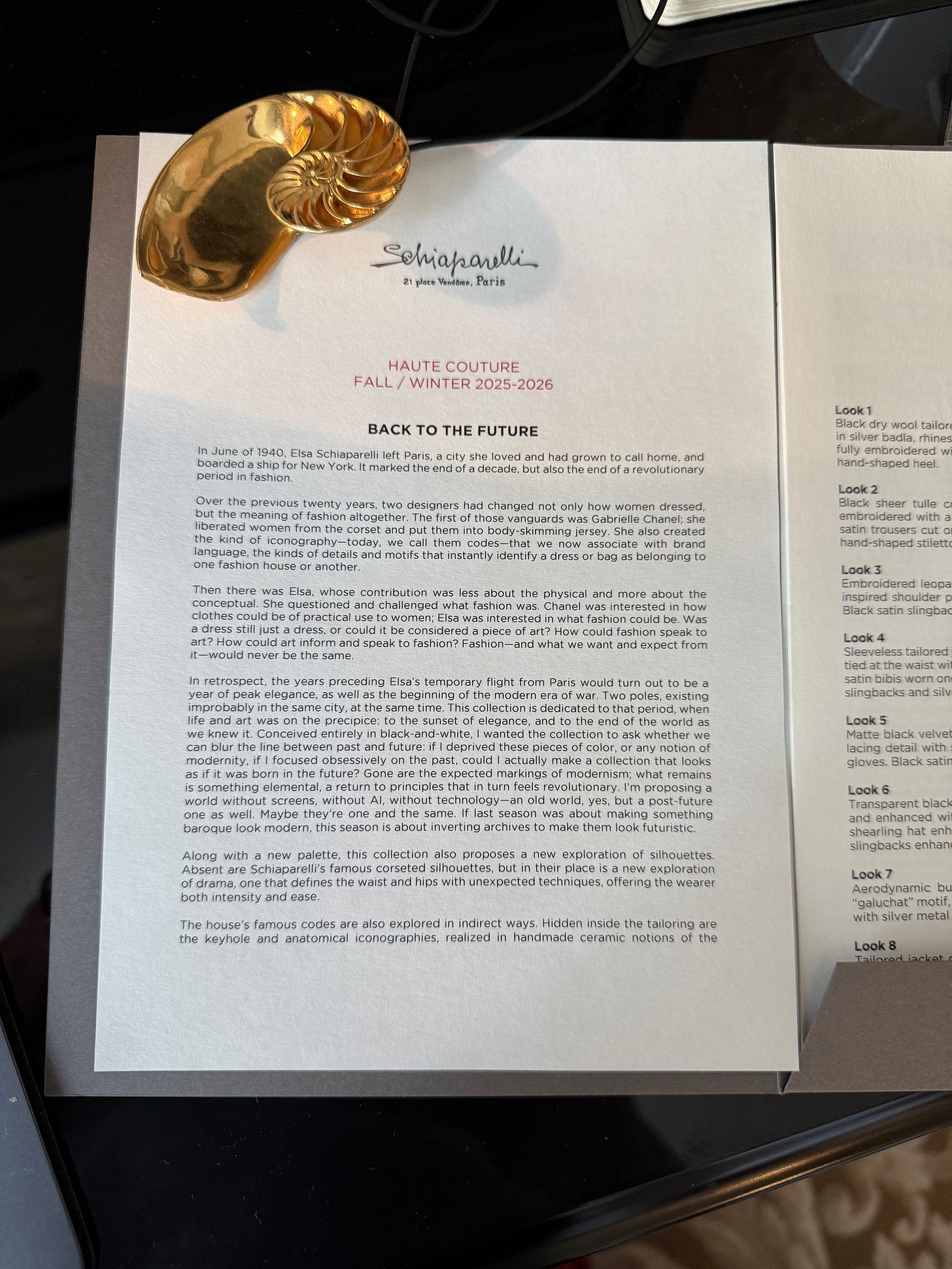

What a beautiful accounting of a day in the life of the Roseberry family.
I'm plodding through a study of the Gospel of St John. Reading this post kept pointing me at John 16:33, "I have said these things to you, that in me you may have peace. In the world you will have tribulation. But take heart; I have overcome the world.”